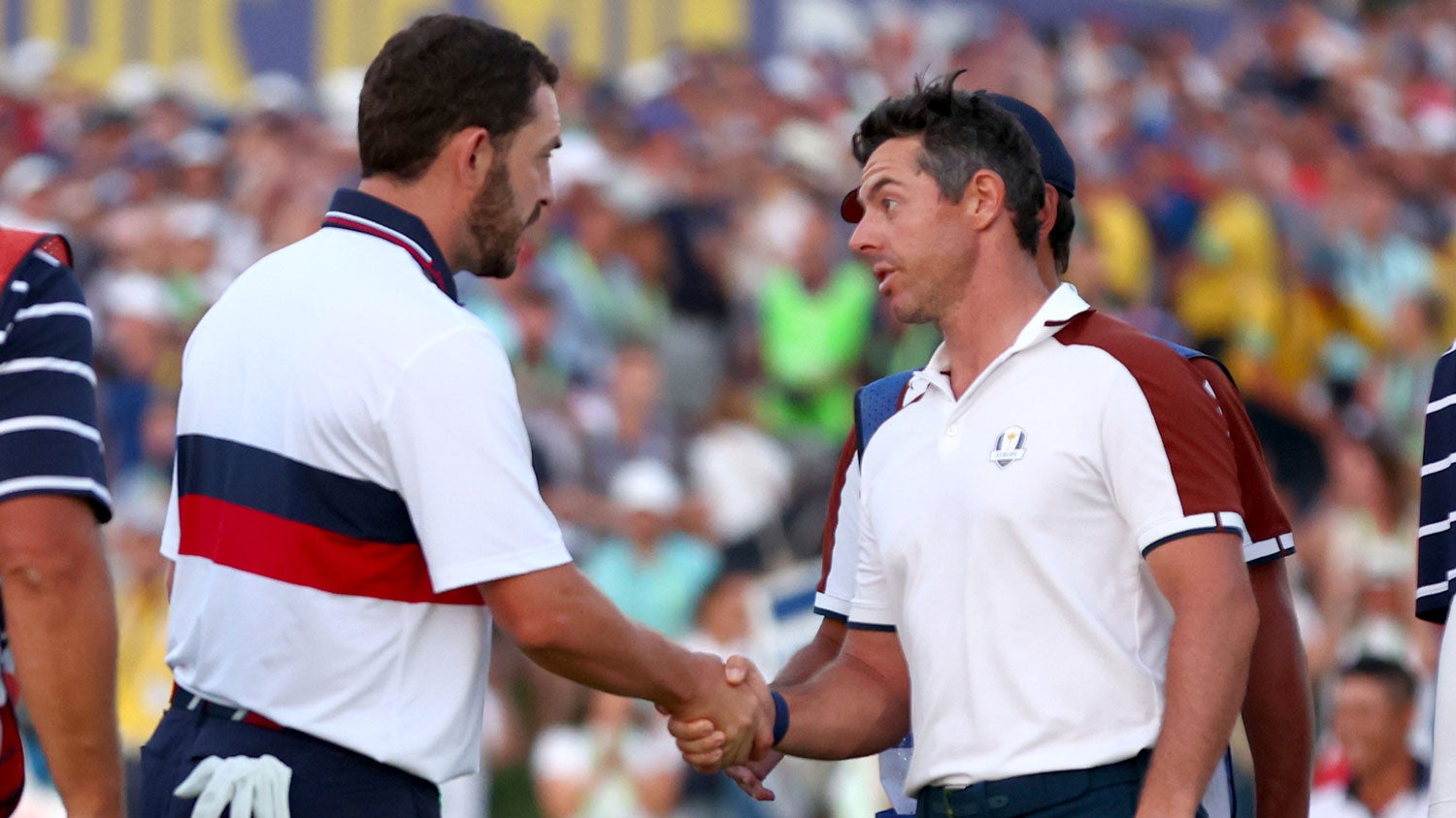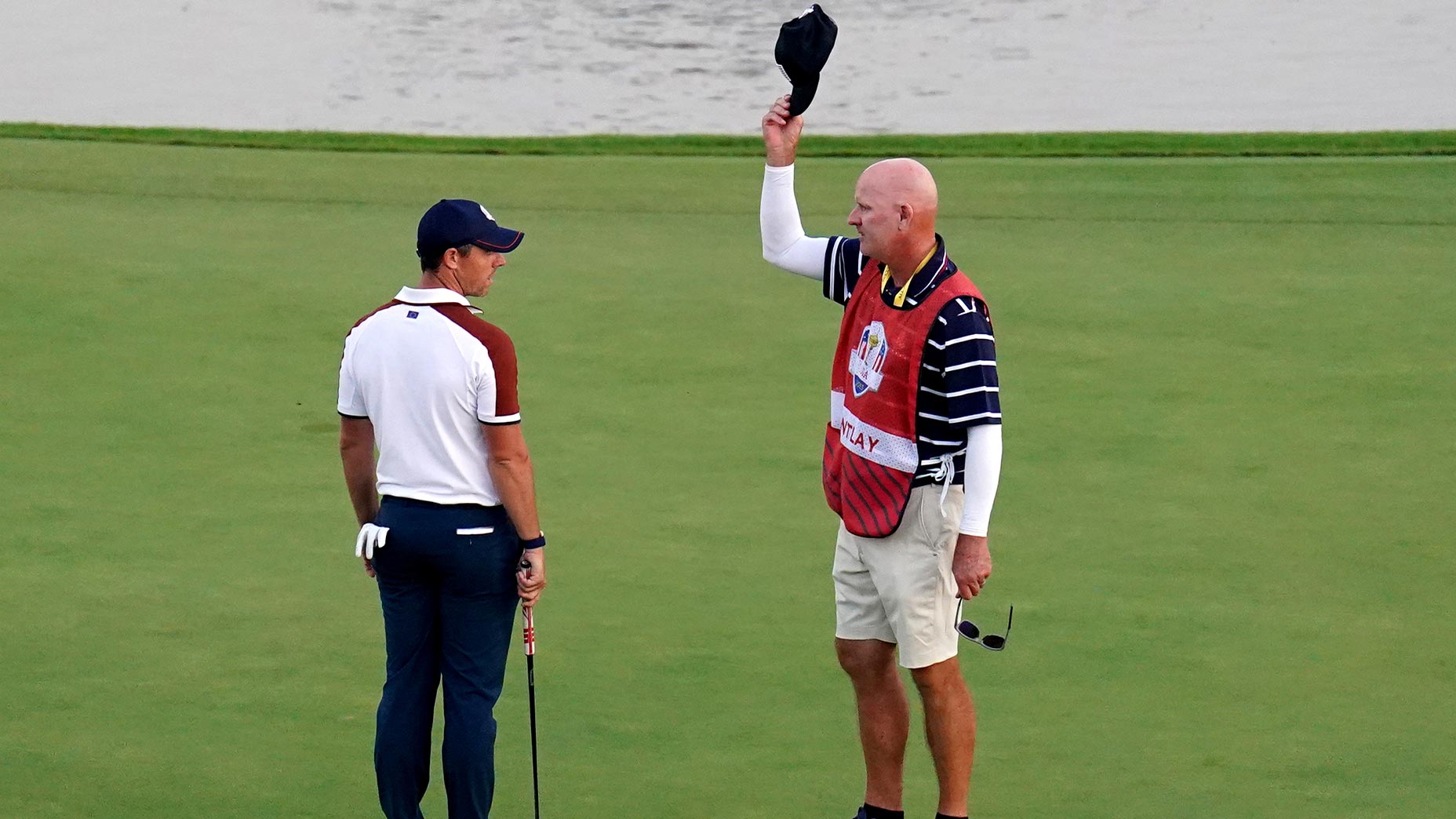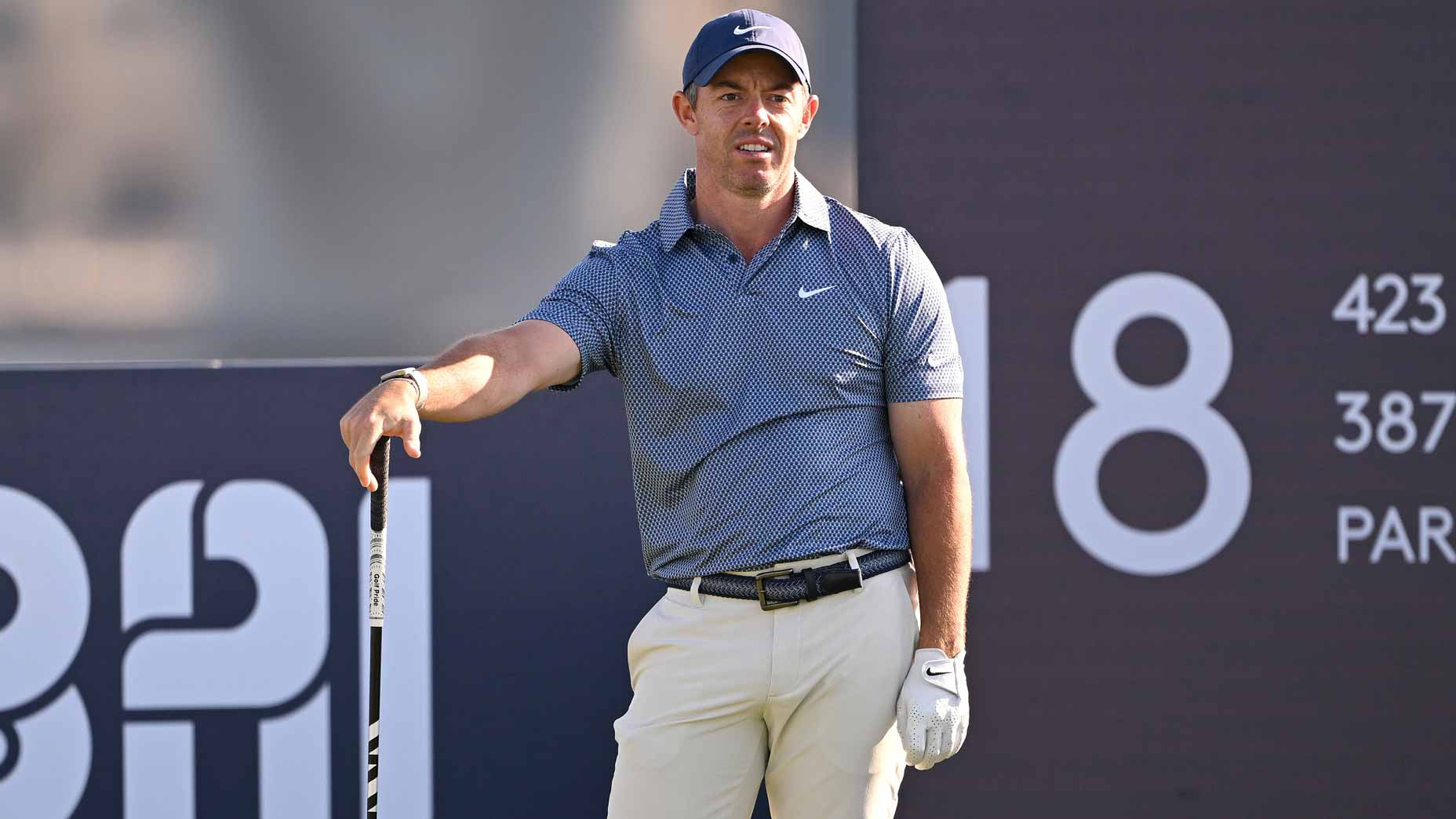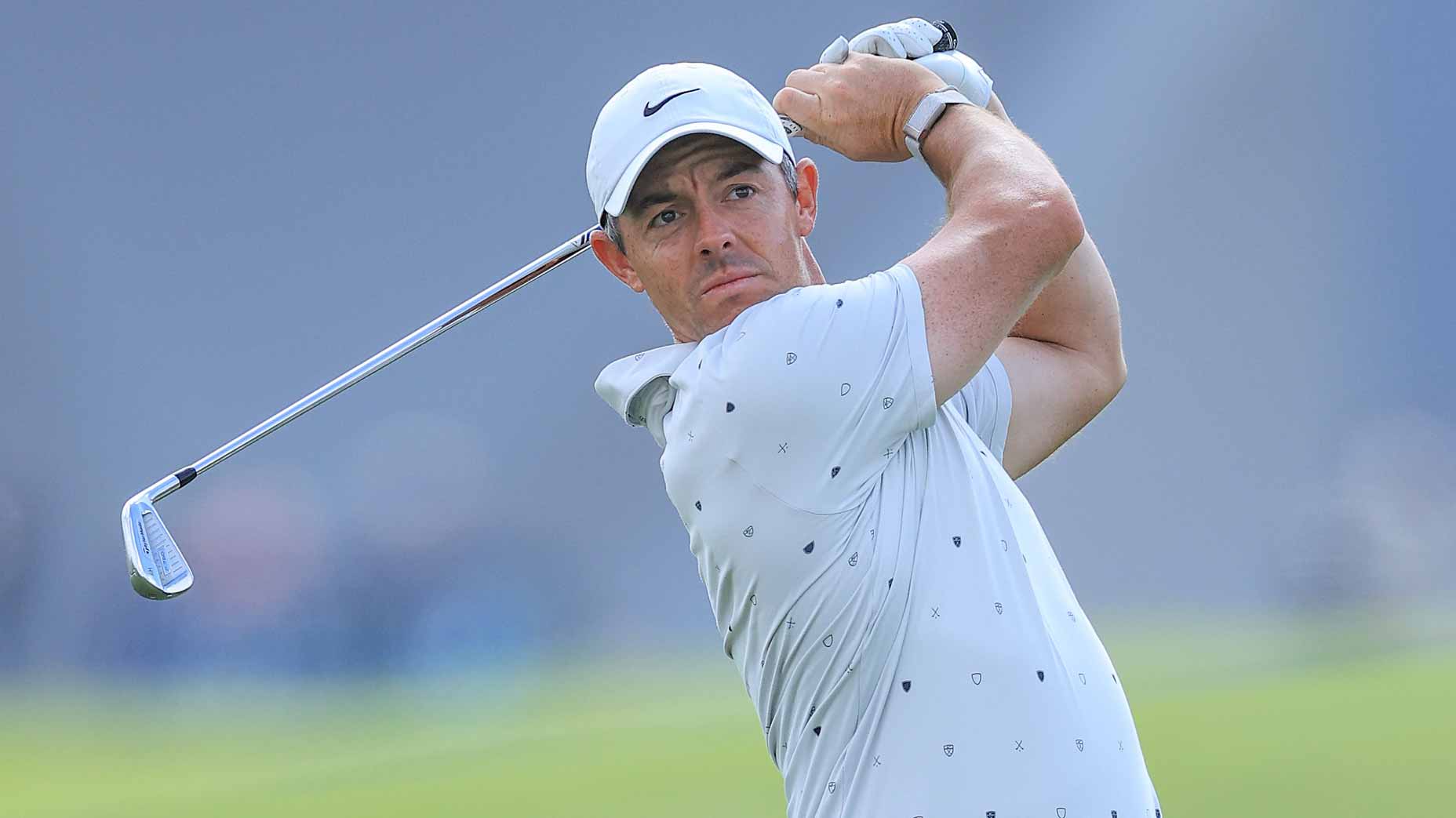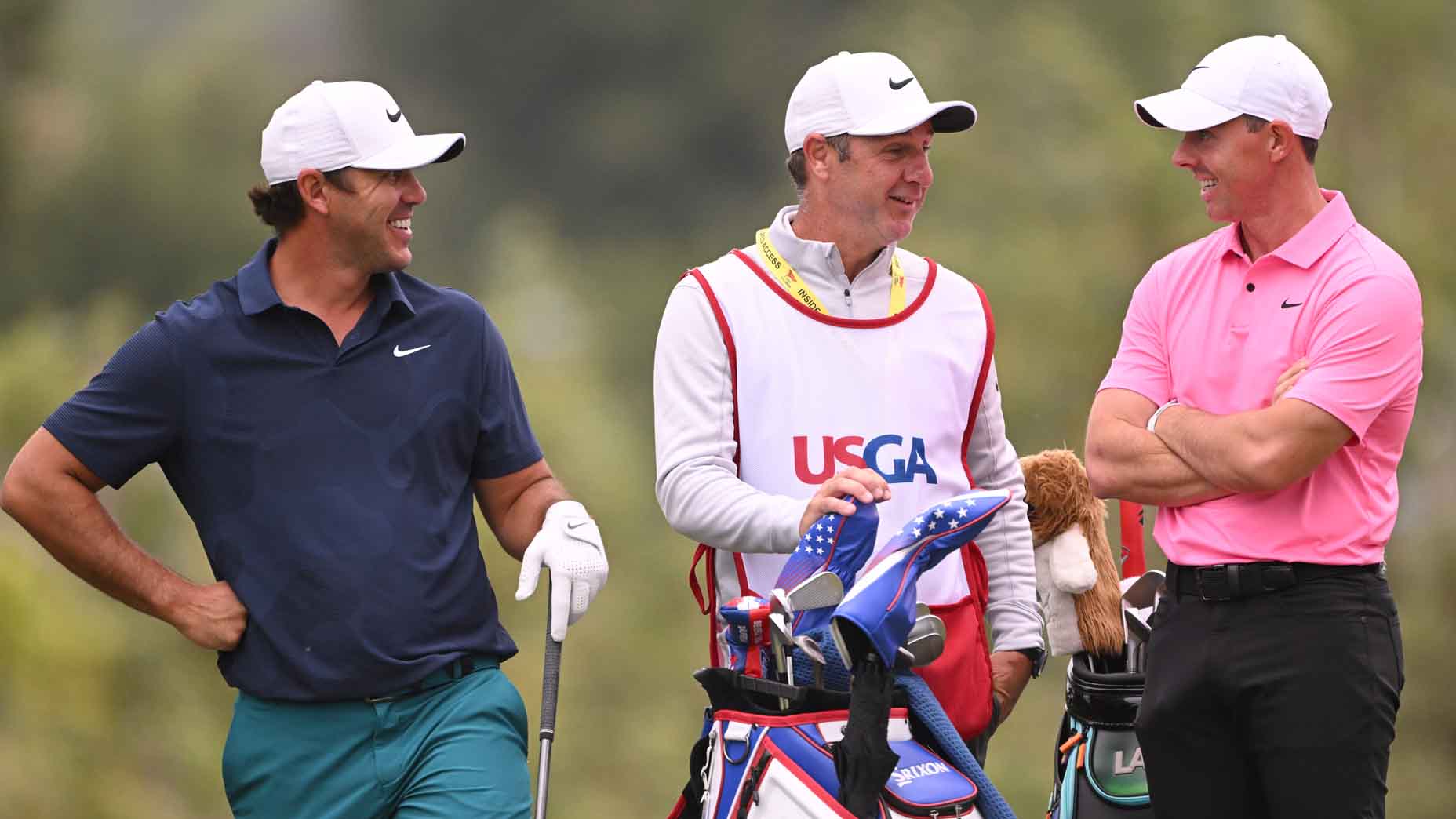PINEHURST, N.C. — Yes, of course Rory McIlroy wanted to be in the final pairing Sunday at this 124th U.S. Open. Which player wouldn’t want to play alongside Bryson DeChambeau in the marquee game of this megawatt tournament? Earning that kind of privilege and pressure is what you play for, practice for, grind for. And yet, McIlroy noted Saturday evening, the penultimate pairing does not lack for its own perks. “Pros and cons to being in the last group,” he said. “Maybe playing one group ahead mightn’t necessarily be a bad thing.”
McIlroy meant for himself, on a strategic level, but in this case, he also could have been speaking for a legion of tweeting golf fans, who were giddy to see where McIlroy, after a third-round 69 on Pinehurst No. 2, had landed on the Sunday tee sheet: 2:10 p.m. with…Patrick Cantlay.
Oh, the drama!
If you’re a close observer of the professional game, you know these two have some history. If you’re not, hop aboard our time machine. First stop: the 2023 Ryder Cup in Rome.
Ryder Cups often get heated but the second day of team matches in the Italy edition was especially spicy. Fueling that tension: a report that had surfaced early in the day that alleged Cantlay had refused to wear a team hat during the matches to protest the U.S. players not being paid for their services. As word of the report spread across the already charged galleries following Cantlay and Wyndham Clark’s fourball match with McIlroy and Matt Fitzpatrick, the European fans relentlessly heckled Cantlay. By the time the players arrived tied on the 18th green, the match had reached a fever pitch. Then things got wilder still.
When Cantlay drained a clutch birdie putt to put the Americans in pole position, his caddie, Joe LaCava, rejoiced — too much in the eyes of McIlroy, who was still trying to sink a birdie of his own to tie the match. McIlroy missed. As did Fitzpatrick did. The Americans prevailed, 1 up.
“Here’s what angered me,” McIlroy would say later in a lengthy interview with Irish golf writer Paul Kimmage. “My relationship with Cantlay is average at best. We don’t have a ton in common and see the world quite differently. But when I saw he was getting stick on the 17th and 18th greens, I tried to quieten the crowd for him. And I don’t think Fitz and I were afforded the same opportunity to try and hole those putts to halve the match.”
McIlroy’s rage did not dissipate quickly. Before leaving the property, he berated U.S. caddie Jim “Bones” Mackay, a moment that was caught on cameras and beamed all over the world. Soon after that, when McIlroy had returned to his hotel, he encountered Ricky Elliott and Claude Harmon, Brooks Koepka’s caddie and swing coach, respectively. “They’re trying to defuse the situation,” McIlroy told Kimmage, “but I start having a go at them: ‘Joe LaCava used to be a nice guy when he was caddying for Tiger, and now he’s caddying for that d–k he’s turned into a …”
McIlroy didn’t finish the thought.
Cantlay has never chirped McIlroy, at least not publicly, but it would not be a leap to suggest that he would agree with McIlroy’s comment about how differently the two golfers see the world — or at the very least the world of men’s professional golf, which each of them has or is playing a crucial role in shaping.
Rory McIlroy’s spicy Patrick Cantlay rematch reveals new U.S. Open rivalsBy: James Colgan
McIlroy joined the PGA Tour Policy Board in 2022, and Cantlay in ’23. In McIlroy’s tenure, which ended when he resigned in November of last year, his opinions were widely known, because he regularly broadcast them: at press conferences and podcasts and everywhere in between. In the early days of the PGA Tour’s war with LIV, he was a staunch critic of the new league, its format and everything it represented. He poured himself into the fight, so much so that he burned himself out and stepped down from his board post.
As McIlroy was withdrawing, Cantlay was taking on an increasingly larger board role. “I care a lot about the PGA Tour,” he told my colleague, Dylan Dethier, late last year. “I grew up wanting to play on the PGA Tour and win tournaments on the PGA Tour, and I’ve been fortunate enough to have done that. So when I joined the board, I viewed that as a responsibility. It was important for me to take that very seriously and I have taken that very seriously.”
In that same interview, Cantlay said of the PGA Tour-PIF negotiations, which are still ongoing to this day: “If the best option for the Tour is with PIF, then I’m all for that. The guiding light for the player directors and the whole board is to do what’s best for the PGA Tour.”
McIlroy’s stance on LIV and PIF has softened. Like Cantlay and Tiger Woods and the Tour’s other player directors, McIlroy has acknowledged that finding middle ground with golf’s new powerbrokers is the only way forward. But he also has been more vocal than some of his peers about the importance of globalizing the men’s professional game. “My dream scenario is a world tour, with the proviso that corporate America has to remain a big part of it all. Saudi Arabia, too. That’s just basic economics,” he told John Huggan of Golf Digest in January. “Revenues at the PGA Tour right now are about $2.3 billion. So how do we get that number up to four or six? To me, it is by looking outward. They need to think internationally and spread their wings a bit. I’ve been banging that drum for a while.”
Cantlay and his fellow player directors haven’t banged their drums quite so loudly, so it’s unclear how they feel about the prospect of a global circuit. What is clear is that when McIlroy tried to rejoin the Policy Board in the spring, taking Webb Simpson’s spot, the move was blocked. “There’s been a lot of conversations,” McIlroy said at the Wells Fargo. “Sort of reminded me partly why I didn’t [stay on the board]. So yeah, I think it got pretty complicated and pretty messy.
“I think with the way it happened, I think it opened up some old wounds and scar tissue from things that have happened before. I think there was a subset of people on the board that were maybe uncomfortable with me coming back on for some reason.”
That subset, according to reporting by Joel Beall of Golf Digest, included Cantlay, Woods and Jordan Spieth.
Cantlay chooses his words carefully, and did so when speaking with Dethier last year. When asked about his relationship with McIlroy, Cantlay said: “I think we’re both highly competitive and we’re both trying to be the absolute best. I think we both admire that part of each other. As far as the Policy Board goes, we’ve worked really closely together and had a really good working relationship over my year on the board.
“Look, I talked to him post-Ryder Cup and, you know, everything was cordial and all good.”
And the “d–k” comment?
“Yeah, I saw that. I think it was taken out of context. And that’s kind of the world we live in, where the headline drives the story,” Cantlay said.
Which brings us back to Cantlay and McIlroy’s Sunday pairing at this U.S. Open, which marks the first time they will play in the same group since their fiery fourball match at Marco Simone — but the sixth time together in their careers in stroke-play events. A month before the Ryder Cup, in fact, McIlroy and Cantlay were paired in the final round of the FedEx St. Jude Championship. Cantlay shot 64, one better than McIlroy, to advance to a playoff, where he lost to Lucas Glover. In their eight stroke-play rounds paired together since 2020, Cantlay has an average scoring of 68.75 to McIlroy’s 69.13.
Rest assured, though, at this moment only one score is on each of their minds: what they’ll need to shoot Sunday to become the 124th U.S. Open champion.
